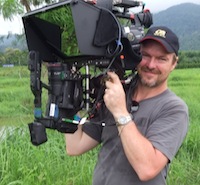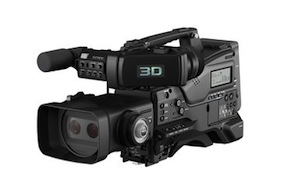< Back to all posts
3D Filmmaking: The Next Big Trend
Karl Schodt has been working in the film industry for more than two decades as a director of photography on hundreds of feature films, commercials, documentaries, and corporate projects. His work has taken him to film in more than 50 countries worldwide.
He is one of the pioneers of 3D technology in New Zealand, having filmed 3D in the US, New Zealand, Singapore, China, and Thailand, on many projects. His projects include one of the first 3D television programs for the Discovery/Sony channel 3Net, a 3D Museum attraction at the Auckland Museum, Kung Fu, Thai Kick Boxing, the first 3D music video ever filmed in New Zealand, and sports 3D.
I proposed a question to our New Zealand Director of Photography Karl Schodt asking if 3D filmmaking is something we should be getting involved with, or is it just a fad? This is what he had to say:
 The jury is still out on the answers to those questions at the moment. My view is yes, and no. I think that 3D filmmaking is coming, and yes, it is something I want to be involved in, and no, I don’t think it’s a fad. Why?
The jury is still out on the answers to those questions at the moment. My view is yes, and no. I think that 3D filmmaking is coming, and yes, it is something I want to be involved in, and no, I don’t think it’s a fad. Why?
Products evolve, and so do we. It’s partly the work of the manufacturers, who are constantly upgrading their offerings. It keeps them in business, and it keeps us on our toes. It’s not a bad thing, because the changes force us to evolve our skills—and suddenly the new thing becomes the norm. I hear all the detractors who say that they don’t like the glasses, yet we go into the cinema and watch 3D movies with glasses on without a problem. Others say that they will wait until glasses-free televisions comes out. Well, that technology is not far away.
All new technology comes out with a bang and a roar, then calms down and goes silent before finding its way into our life. Look at your phones. Most of you will have a smart phone, yet when the 3G technology first came out more than 14 years ago, the handsets weren’t evolved enough to use the technology. Out came the iPhone, and now it’s a firm part of our digital lives. 3D will be the same.
The biggest problem for all the television stations showing 3D worldwide now is the lack of content, so those who do decide to up-skill should find themselves at the forefront of work.
For those who say they’re not interested in 3D filmmaking, answer this question:
How many camera operators are out there in the world?
 Millions, and they are all chasing the same ever-shrinking pot. A consumer camera can now give as good an image as a professional camera gave only a few short years ago. More and more people are working for tiny budgets and producing great content, so how can you justify your prices? How can you make yourself “future-proof”?
Millions, and they are all chasing the same ever-shrinking pot. A consumer camera can now give as good an image as a professional camera gave only a few short years ago. More and more people are working for tiny budgets and producing great content, so how can you justify your prices? How can you make yourself “future-proof”?
I choose to stay up to speed on future technologies, and 3D is one of those. But 3D is not something you can just go out and shoot. You need to understand the technology and how 3D works. But it’s not rocket science. Quite simply, 3D filmmaking has evolved. It’s smaller, faster, and easier than it was.
Here’s why:
- We’re no longer going out with huge crews and large rigs and massive budgets. When I was first filming in 3D, the equipment was bulky and hugely expensive. Now that equipment is affordable.
- The beam-splitter rigs are better than they ever were. Six years ago, beam-splitters were custom-built and not commercially available. Then four years ago, $40,000 in US dollars (USD) would get you one of the first commercially available 3D beam-splitters, and now in 2012, it’s around $6,000 USD for great models.
- Stereo processors have gone from being desktop fixtures to small and portable, starting at around $700 USD. Cameras are cheaper. If you already have a camera that can genlock, then you’re halfway there. So price barrier is no longer a consideration.
- The post process is easier since 3D capability is already included in major edit systems. Anything you can do in 2D, you can do in 3D, so you’re not limiting your project. You just need to know what you’re doing. Yes, it’s more expensive, but not by a great margin. And, an operator-stereographer can charge more, because you have a skill that not many others currently have.
Ask yourself: What do you want to be doing in 2018?
 3D is an evolving market. In 2008 the 3D display market was under 1 million units with revenue of $902 million USD. By 2011 it had increased to 51 million units with a revenue of over $13 billion USD and is forecast to grow to 196 million units and $22 billion dollars USD in revenues by 2018.
3D is an evolving market. In 2008 the 3D display market was under 1 million units with revenue of $902 million USD. By 2011 it had increased to 51 million units with a revenue of over $13 billion USD and is forecast to grow to 196 million units and $22 billion dollars USD in revenues by 2018.
I don’t intend to change your mind about 3D filmmaking. If you want to try something new—you will.







Leave a Reply